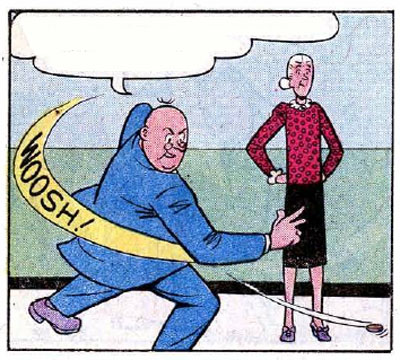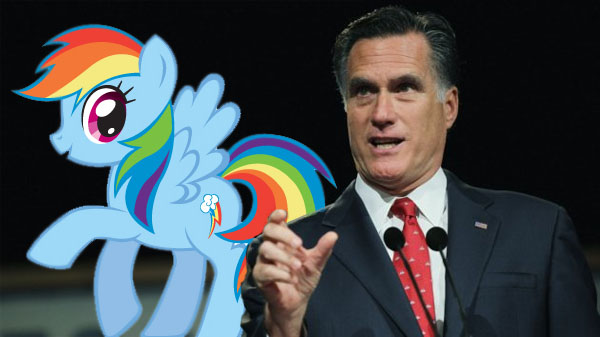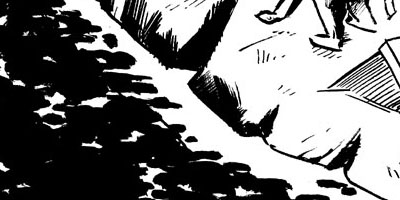Of course, realistically speaking, this post should really be titled, “Empirical Reasons Why The Silver Age Was More To My Personal Taste”, or perhaps if I wanted to come on strong, “Empirical Reasons Why The Silver Age Catered Better To A Mass Audience”. But this is the Internet, and we have proud traditions here. Stating an opinion modestly and without hyperbole is not the way of our people. (By the same token, just to forestall the response, I’m primarily talking about superhero comics here. I’m aware that superhero comics are not the only thing out on the stands right now, so let’s not be that person who points this out every time, thinking that they’re the first human being ever to make that statement, okay? Okay.)
The important point, though, is “empirical”. All too often, when I talk about how I really do think that the Silver Age was a better era of comics, with superior stories being done by superior talent, people respond by saying that nostalgia cheats. They say that everyone’s favorite age of comics is the one they had when they were young, and that I’m underestimating how many good writers and artists are working in the field these days and how hokey and lame some of those older comics could be when you come back and read them as an adult. There is, of course, only one problem with that statement. I did come to the Silver Age as an adult. I didn’t start really getting into Silver Age comics until I was in my 30s, after a lifetime of reading comics from the 80s, 90s and 2000s, and I was astonished to find that not only were most of the claims of hokiness and camp utter myths, the stories held up amazingly well even after decades of changes in language and style. They were a wonderful breath of fresh air, and frankly, the moment I found the Essentials and Showcases was the moment my interest in current comics died, never to be resurrected. And here’s why:
1) The stories had better pacing. For all the current insistence on “decompression” and “writing for the trade”, the big difference between a Silver Age story and a modern one is a refreshing lack of padding in the classic tales. Does anyone really want to sit down and try to claim that Ultimate Spider-Man #1-6 is superior to Amazing Fantasy #15 because it had a whole issue of Peter Parker being an unlikable douchebag instead of just a few panels? Did ‘Funeral for a Friend’ really need to be eight issues long in order to convince us that Superman was dead and certainly not coming back this time (wink wink nudge nudge)? When ‘Civil War’ has one good idea per issue, delivered in a full-page spread at the very end, it’s hard not to feel like they could have done the whole thing as a 64-page special if they’d been willing to work a little harder. Whereas by contrast, Silver Age stories frequently had three stories per issue. A well-told eight page story is a thing of beauty, and learning what to include and what to leave out improves a writer’s craft (and if you don’t believe me, just ask Alan Moore and Stephen King, both of whom have said that it’s harder to write a good short story than a novel/graphic novel.) For all that Silver Age stories could occasionally shortchange you on backstory and exposition, they more than made up for it with breakneck pace.
2) Comics were allowed to have a sense of humor. It’s not that humor has vanished entirely from comics these days, despite the best efforts of Dan Didio. But it has been greatly diminished by three decades of “Comics Aren’t Just For Kids!” and endless, stilted efforts to out-Watchmen Alan Moore (who’s since moved on to things like ‘Splash Brannigan’ and ‘Jack B. Quick’, written primarily to make a point that comics can be fun.) It’s always been hard to get something humorous and off-beat off the ground, as witnessed by the fact that Metamorpho doesn’t have a second volume, but at least the “serious” series weren’t so po-faced and drab. Captain America used to trash-talk, Superman used to be mischievous and capricious while he dispensed justice (there’s a great story where he winds up owing a crook a favor, and repays it…because he’s Superman…but in ways that give the guy the shaft…because he’s a dick.) Humor in comics nowadays consists of making fun of how stupid old comics were, which isn’t funny because the old comics were kidding and they knew it. Yes, the Hulk talked funny back then. Y’know what? The guy who came up with, “Hunters killed Bambi’s mom!” was fully aware of that.
3) The environment was richer and more diverse. I’m not talking about race here, although it’s not exactly like modern comics can look down on the Silver Age when it comes to ethnic and gender diversity. Yes, heroes back then were predominantly white males, despite some great characters like Black Panther or Sue Storm. Not at all like nowadays, where the headlining Green Lantern is black Hispanic white again, or the Atom is Asian white again, or Green Arrow is Asian white again, or…
But I’m primarily talking about the diversity of stories and the richness of characters. Marvel and DC have both been concentrating on superheroes as their bread-and-butter since the introduction of the Direct Market to the point where we’re honestly trumpeting tiny independents with circulation numbers smaller than Texas towns as evidence of the richness of genres that comics can exhibit. Whereas in the Silver Age, superhero comics could barely elbow out Westerns, crime comics, horror comics, romance comics, comedy comics…Jerry Lewis and Bob Hope each had their own series, with circulation numbers higher than ‘X-Men’ have today.
And further, even within the superhero genre there were more characters. These days, after reboots and post-reboot reboots and deck-clearing event crossovers, half the B and C-listers are dead or evil or both, and efforts to create the next generation’s icons are few and far between. A while back, MGK posted about how hard it was for the WWE to write good stories when they aren’t working to groom their minor characters into fan favorites, and the same can be said of DC and Marvel. After you’ve killed off forty-seven heroes in your last crossover’s double-page spread, it’s hard to find good guest stars anymore. If you want to look at the big two as managers of intellectual properties, “Infinite Crisis” was intellectual arson.
4) They were more creative. The first twenty issues of ‘Amazing Spider-Man’ introduced the Chameleon, the Vulture, Doctor Octopus, the Sandman, the Lizard, the Enforcers, Electro, Mysterio, the Green Goblin, Kraven the Hunter, and the Scorpion. That’s probably more new villains than the series has introduced in the last hundred issues, even before you start comparing the quality of the villains. And Spider-Man wasn’t an outlier. Most of the enduring villains, heroes and supporting casts of comics nowadays are in the neighborhood of fifty years old; the last major addition to the publishing stable of the big two was probably the Punisher, and he’s tipping the scales past thirty. Comics nowadays are coasting on their back catalog, which is not inherently unforgiveable but is a huge disaster when paired with a marketing and distribution system that primarily caters to existing fans. Which leads to point five…
5) They weren’t imitating the Silver Age all the damn time. Once you scratch off the veneer of humorlessness, decompression and self-consciously “adult” storytelling that covers modern comics, what you basically get is a bunch of people trying very hard to recreate the comics that were popular when they were kids. Which is understandable, but one of the most wonderful, amazing, spectacular and fantastic things about the Silver Age is that they were doing things that nobody had tried before. They were ferociously experimental, pulling in ideas from other genres and deconstructing existing superhero tropes. They were constantly introducing new heroes, new villains, new worlds, new settings at a pace nobody could match. And now? Now all we get is an extended “house mix” of those new stories. The cool thing about the Justice League of America wasn’t that it had Kanjar Ro and his Gamma Gong, to pick a random element that Mark Waid brought back just to bring back at one point. It’s that nobody had ever seen anything like Kanjar Ro before. The Silver Age is best recreated by not repeating it.
There. Empirical reasons. Now, when you agree or disagree with me, we’ll at least be talking about something concrete.
























